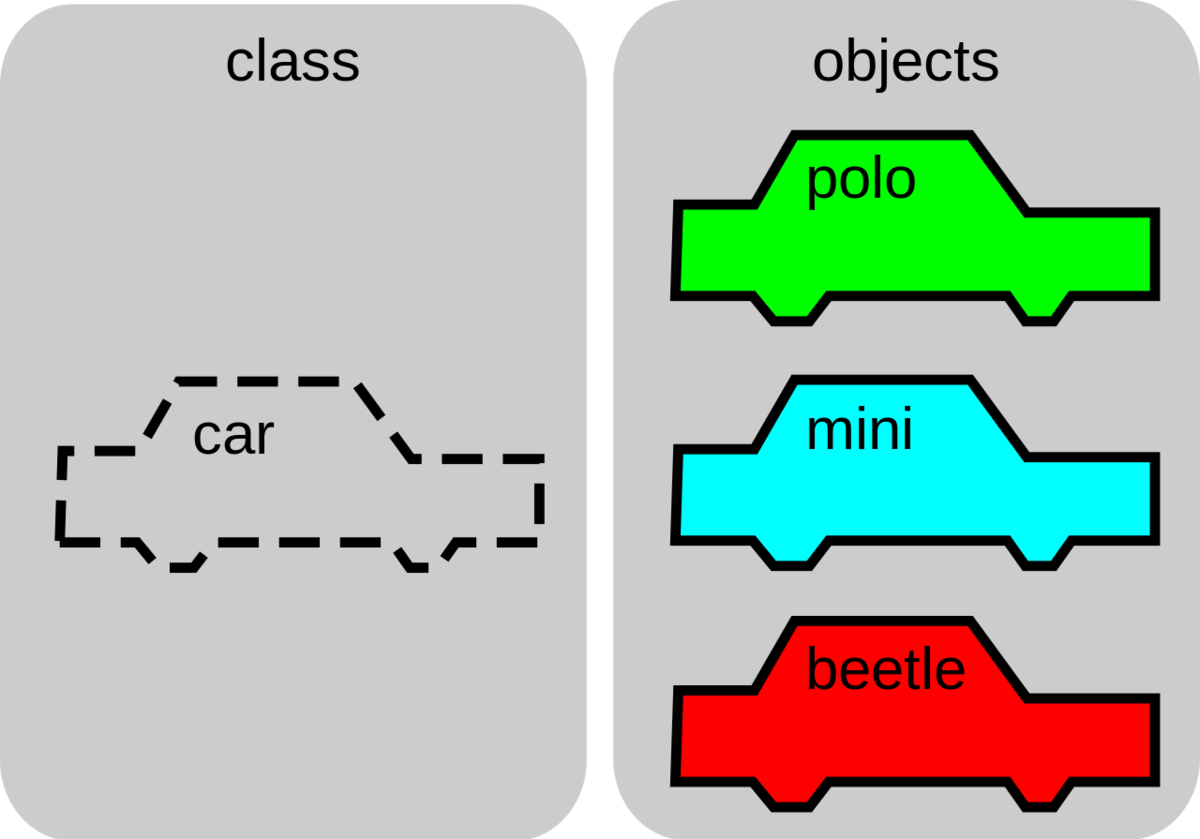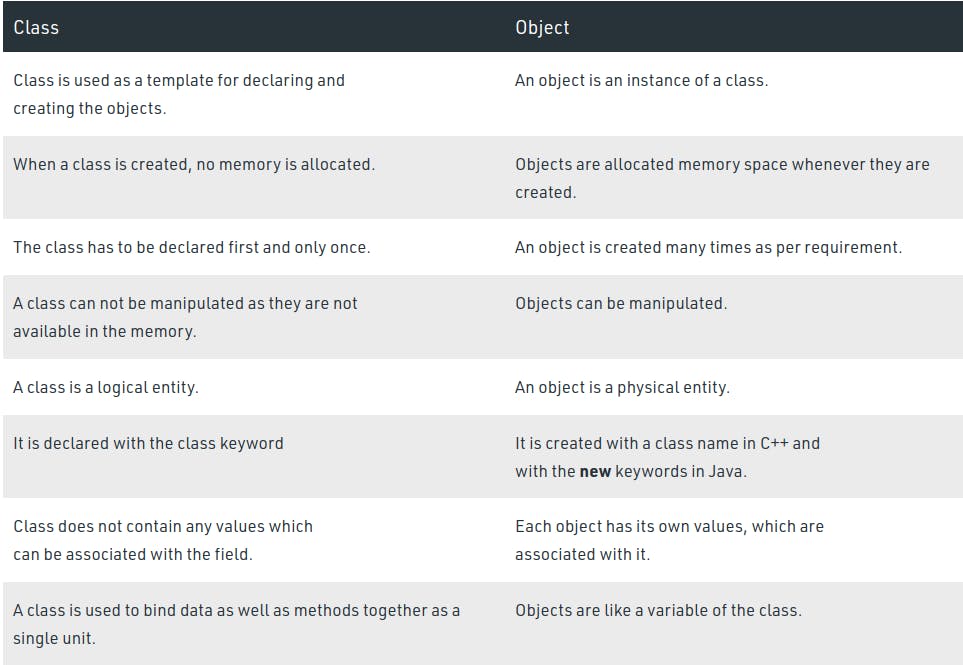Concept
Everything is a Concept & Object.

From the above image, we can see that an abstract concept CAR acts as a class, we can initialize a car with various objects. And here polo, mini, and beetle are objects.
The image above shows how a Car object can be the template for many other Car instances. In the image, there are three instances: polo, mini, and beetle. Here, we will make a new class called Car, that will structure a Car object to contain information about the car’s model, the color, how many passengers it can hold, its speed, etc. A class can define types of operations, or methods, that can be performed on a Car object. For example, the Car class might specify an accelerate method, which would update the speed attribute of the car object.
Another example:
Concept/Class : "Dog" -> Object "Neapolitan Mastiff", "Chow Chow" etc.

Class : The Definition
In object-oriented programming, a class is a blueprint for creating objects (a particular data structure), providing initial values for state (member variables or attributes), and implementations of behavior (member functions or methods). It is a basic concept of Object-Oriented Programming which revolve around real-life entities. Class determines how an object will behave and what the object will contain.
Class: The Syntax
The basic syntax of writing a class in java.
class <class_name>{
field;
method;
}
Example
class Student{
//Fields
private String studentName;
private int studentAge;
private String studentRollNumber;
private String studentMotherName;
private String studentFatherName;
//Methods
public String studentDetails(){
return student_details;
}
}
Object : The Definition
An object is an instance of a class. An object in OOPS is nothing but a self-contained component that consists of methods and properties to make a particular type of data useful. For example color name, table, bag, barking. When you send a message to an object, you are asking the object to invoke or execute one of its methods as defined in the class.
Object: The Syntax
The basic syntax of creating an object.
ClassName ReferenceVariable = new ClassName();
Example
Student student1 = new Student();
Student student2 = new Student();
Class Vs. Object

Finally
But while you can always write 'spaghetti code' in a procedural language,
object-oriented languages used poorly can add meatballs to your spaghetti.
- Author: Andrew Hunt

